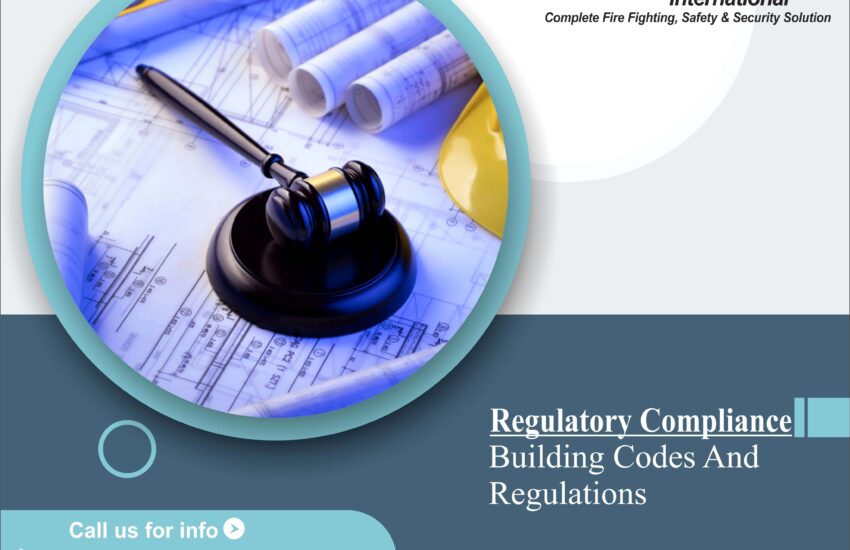Building Codes And Regulations For architects practicing in California, navigating the intricate landscape of building codes and regulations is essential for delivering safe, compliant, and successful projects. The state’s complex regulatory framework is designed to promote safety, sustainability, and accessibility in all forms of construction. However, understanding and complying with these regulations can pose significant challenges.
A strong grasp of California’s building standards not only ensures legal compliance but also streamlines the design and construction process, reduces costly revisions, and improves overall project outcomes. This article outlines the critical codes architects must know and offers best practices for integrating code compliance into architectural practice.
Overview of California’s Building Codes and Regulations
California’s building requirements are primarily governed by the California Code of Regulations (CCR), Title 24, known as the California Building Standards Code. This comprehensive set of regulations is updated regularly and covers all aspects of building design and construction, including:
1. California Building Code (CBC)
This sets the minimum standards for commercial and non-residential buildings, addressing structural design, construction materials, occupancy classifications, and fire resistance. It forms the backbone of architectural compliance in California.
2. California Residential Code (CRC)
The CRC outlines regulations specific to single-family homes, townhomes, and duplexes, including requirements for foundations, framing, plumbing, and electrical systems.
3. California Fire Code (CFC)
The CFC enforces fire safety regulations, including requirements for fire alarms, suppression systems, fire-rated materials, and emergency access routes.
4. California Energy Code (CEC)
This code focuses on energy efficiency in both residential and non-residential buildings, including standards for insulation, HVAC systems, lighting, and solar readiness.
5. California Accessibility Code (CAC)
Incorporating federal ADA standards with additional state-specific provisions, this code ensures that buildings are accessible to individuals with disabilities, from parking lots to restrooms and everything in between.
6. Local Amendments
Local jurisdictions often adopt amendments to Title 24 that reflect regional needs and conditions. These can vary by city or county and may impose stricter requirements than the state minimums. Understanding these local variations is crucial during the planning phase.
Best Practices for Navigating California Building Codes
Successfully navigating California’s building codes and regulations requires a combination of technical knowledge, up-to-date information, and proactive collaboration. Here are the best practices every architect should follow:
1. Stay Informed
Codes are revised every three years, with supplemental updates in between. Architects should stay current with code changes by attending:
- Industry seminars and continuing education programs
- Local building department workshops
- Webinars hosted by professional associations
Staying updated reduces the risk of non-compliance and design delays.
2. Understand Local Regulations
Before starting any project, reach out to the local building authority to understand region-specific amendments. Local rules can significantly impact:
- Setback requirements
- Fire safety provisions
- Green building mandates
- Seismic design criteria
A proactive approach with local jurisdictions helps avoid mid-project redesigns.
3. Collaborate with Code Consultants
Working with a building code consultant can simplify complex compliance challenges. These professionals:
- Review design documents for code issues
- Suggest compliant alternatives
- Liaise with building officials on your behalf
Early involvement of code experts can prevent delays in the approval process.
4. Integrate Compliance into the Design Phase
Code requirements should be considered during schematic design, not after construction documents are complete. This includes:
- Accessibility features
- Fire-rated walls and egress paths
- Sustainable design targets
- Structural load calculations
Integrating compliance early minimizes costly revisions later.
5. Conduct Internal Plan Reviews
Before submitting plans to the city or county, perform a thorough internal review using checklists and peer assessments. This allows you to:
- Catch errors before submission
- Identify omissions or misinterpretations
- Increase chances of first-round approval
Regular plan reviews promote quality control and smoother permitting.
6. Communicate With All Stakeholders
Maintain open communication with:
- Clients
- General contractors
- Engineers
- Code officials
When everyone understands the project’s compliance strategy, potential issues are addressed collaboratively and early.
7. Keep Thorough Documentation
Document every decision, design change, and code discussion. Accurate records will:
- Support permit submissions
- Help resolve disputes
- Demonstrate due diligence
Good documentation is critical when responding to Requests for Information (RFIs) or legal inquiries.
8. Prepare for Inspections
During construction, building inspectors will verify compliance. Architects can support successful inspections by:
- Coordinating with contractors
- Attending key inspection milestones
- Ensuring that approved plans are followed on-site
A strong presence during inspections ensures design intent is realized correctly.
9. Train Your Team
Encourage a culture of compliance by training junior staff and interns on the importance of building codes. Topics can include:
- Accessibility standards
- Structural basics
- Life safety systems
- Energy efficiency metrics
A knowledgeable team contributes to faster design cycles and stronger projects.
10. Seek Legal Guidance
When facing high-risk or complex projects, consider consulting with legal professionals. Attorneys who specialize in construction law can:
- Interpret ambiguous code language
- Defend your work in disputes
- Provide guidance during appeals
Legal support ensures your work remains protected under California law.
How Rightway International Can Help
At Rightway International, we understand how challenging it can be for architects to keep pace with California’s evolving building codes and regulations. Our legal and regulatory experts offer support across the full lifecycle of a project—from pre-design consultation to code compliance review and dispute resolution.
Whether you’re working on a residential development in San Diego, a commercial space in Los Angeles, or a public facility in the Bay Area, we can help you:
- Understand and interpret state and local code requirements
- Address compliance challenges proactively
- Represent your interests in case of disputes or delays
Our team works closely with architects and construction professionals throughout California to ensure that your projects move forward with confidence and legal clarity.
Conclusion
California’s building codes are among the most comprehensive and stringent in the country. For architects, understanding and integrating these codes into every phase of a project is essential for ensuring safety, avoiding delays, and delivering high-quality, compliant buildings.


